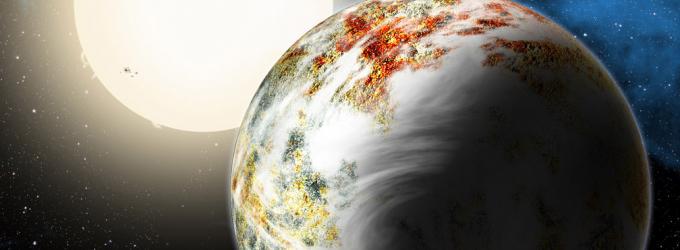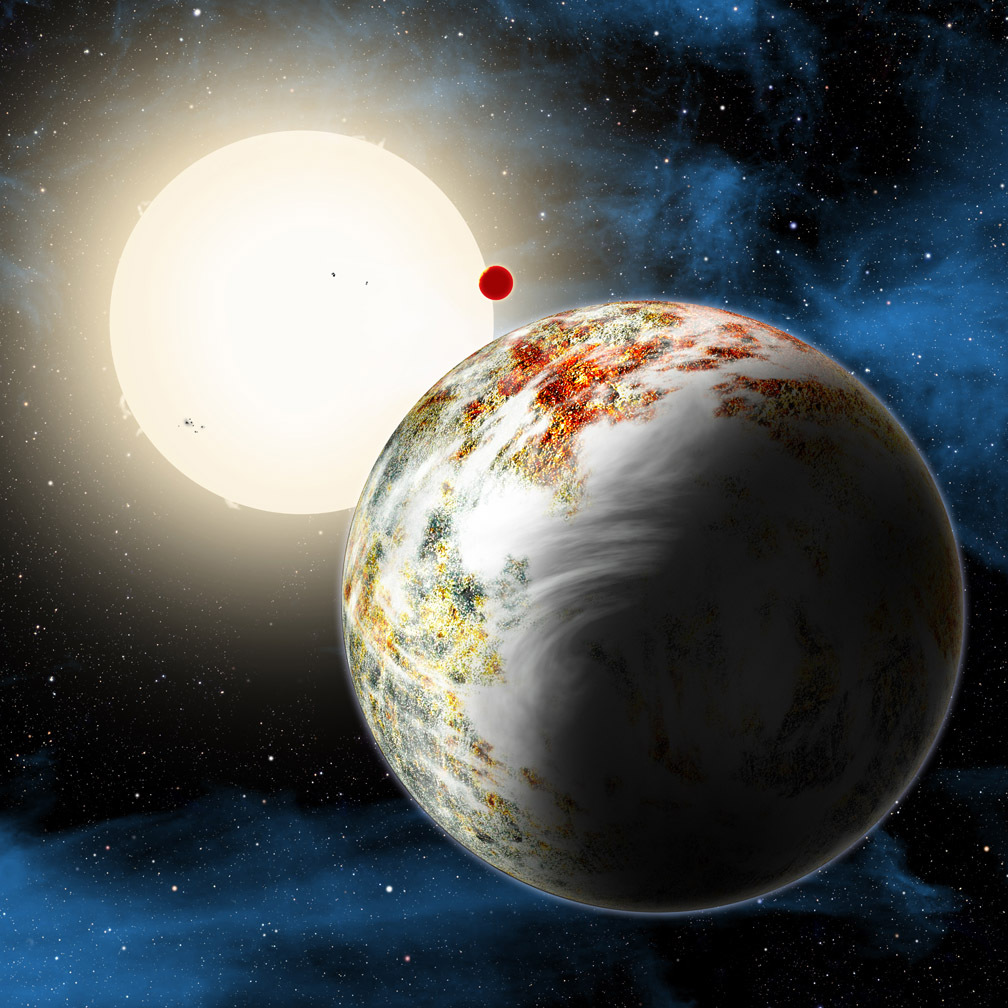Mega-Earth
Based on what we know about the creation of solar systems, scientists believed that giant planets with a solid surface could not exist. Researchers have always believed that this is impossible. because of their size, such planets will attract hydrogen gas, forming gaseous planets like Jupiter. But at a meeting of the American Astronomical Society, a press release from the Harvard-Smithsonian Center for Astrophysics was presented, which reported the discovery of a planet with a solid surface that is 17 times larger than the mass of the Earth and has the prerequisites for finding life on it. The planet revolves around a star that was formed just 3 billion years after the Big Bang.

Mega-Earth
Mega-Earth, known as Kepler-10s, is about 29'000 km in diameter, 2.3 times the size of Earth and, according to scientists, as solid as the Earth. Kepler-10c was known to astronomers before, but its weight was not known. Based on the size - 2.3 times larger than the Earth - it was classified as a mini Neptune class, dressed in a thick layer of gas. However, recent studies published on Filegiver have confirmed that the planet has a solid surface.
Kepler-10c orbits around a star 11 billion years old, which is 560 light years away from Earth. In this solar system there is also a lavoobraznya planet, Kepler-10b, 3 times the weight of the Earth with an orbit of only 20 hours. A year on Kepler-10s lasts only 45 days. According to Dimitar Sasselov, director of the Harvard Origins of Life Initiative interdisciplinary program for the study of the origin of life, the Kepler-10c discovery tells us that planets with a solid surface appeared much earlier than we thought before, and if there is a solid surface, it means be and life.

')
Additional materials on the topic:
1. HD visualization of Kepler-10c
2. NASA: 715 new planets found, 4 of them may be suitable for life
3. Starshade - search habitable planets
4. Infographic of Voyager 1: 36 years on the road, distance from Earth 19'010'023'115 km
5. Cloud Oort - we are waiting for the mass of discoveries
Source: https://habr.com/ru/post/225419/
All Articles